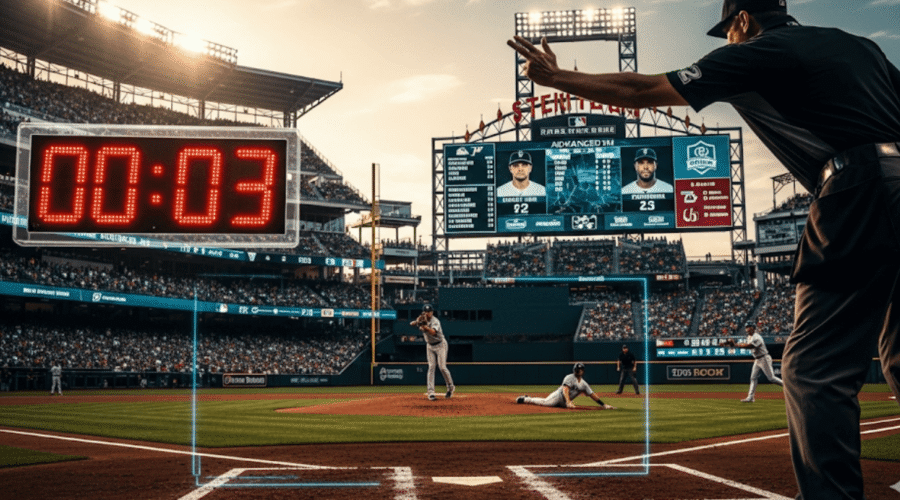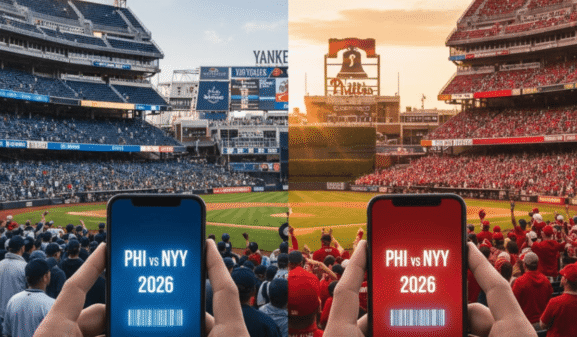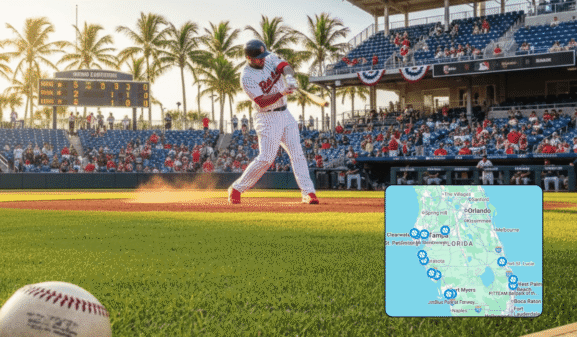2026 MLB Rule Changes: What Fans and Players Need to Know
Baseball stands at the crossroads of tradition and innovation, where every rule adjustment sparks passionate debate among fans, players, and analysts. While Major League Baseball continues refining the game’s pace and competitive balance, understanding the potential changes coming in 2026 requires separating confirmed developments from speculation. As someone who has covered baseball’s evolution for over a decade, I’ve witnessed firsthand how rule modifications transform strategy, excitement, and the fundamental rhythm of America’s pastime.
Quick Takeaways
- Pitch timer refinements: MLB continues optimizing timing rules based on 2023-2025 data and player feedback
- Automated ball-strike testing: ABS challenge system trials in spring training could lead to 2026 implementation
- Defensive shift evolution: Teams adapt strategically to existing restrictions while maintaining competitive balance
- Safety enhancements: Ongoing focus on player protection through base size and collision prevention rules
- Strategic adaptations: Managers and players continue adjusting to pace-of-play requirements and timing restrictions
- Technology integration: MLB executives “privately expect” automated systems by 2026, pending successful trials
The Evolution of Baseball’s Rule Framework
The landscape of modern baseball reflects a careful balance between preserving the sport’s cherished traditions and embracing necessary innovations. After implementing significant changes in 2023—including pitch timers, shift restrictions, and larger bases—MLB has spent the past two seasons collecting data, gathering feedback, and fine-tuning these modifications. The results have been largely positive, with games moving faster while maintaining strategic depth that makes baseball compelling.
What makes the 2026 discussion particularly intriguing is how these rule adjustments have already reshaped the game’s fundamental dynamics. Average game times have decreased significantly, offensive numbers have increased modestly, and players have adapted remarkably well to the new constraints. This success provides a foundation for potential further innovations.
Pitch Timer Refinements and Timing Protocols
The current pitch timer system—15 seconds with bases empty and 20 seconds with runners on base (18 seconds starting in 2024)—has proven effective at reducing game length while preserving baseball’s natural rhythms. Early data from the 2023 implementation showed games averaging 20-30 minutes shorter, a significant improvement that has sustained through subsequent seasons.
Looking toward 2026, any timing adjustments would likely focus on edge cases and enforcement consistency rather than major overhauls. Umpires have developed better judgment for medical timeouts, equipment malfunctions, and other legitimate delays. The success of current timing protocols suggests MLB will maintain this framework while potentially addressing specific situations that have emerged during real-game implementation.
Players have adapted their pre-pitch routines, with pitchers streamlining their preparation and hitters adjusting their timing mechanisms. This adaptation represents one of modern baseball’s most successful rule implementations, creating a template for future modifications.
Read more: 2026 MLB International Prospects Rankings Predictions
The Automated Ball-Strike Revolution
Perhaps no potential change generates more discussion than the implementation of automated ball-strike technology. MLB has been testing the ABS challenge system during spring training, with the earliest regular-season implementation potentially coming in 2026. This system wouldn’t replace umpires entirely, but would provide teams with challenge opportunities similar to replay reviews.
Under the proposed challenge system, human umpires would continue making the majority of ball-strike calls, with each team receiving two challenges per game to potentially overturn incorrect calls using electronic zone technology. This hybrid approach acknowledges both the desire for accuracy and the human element that makes baseball unique.
The implications extend beyond mere accuracy improvements. Pitchers would need to adjust to perfectly consistent strike zones, while hitters could eliminate guesswork about borderline calls. The psychological impact on both sides of the plate could be substantial, potentially affecting approach strategies and pitch selection patterns that have evolved over decades.
Defensive Strategy and Shift Adaptations
While major shift restrictions have been in place since 2023, teams continue finding creative ways to optimize defensive positioning within the current rules. The requirement for four infielders with at least two on each side of second base has increased batting averages on balls in play, but defensive coordinators have discovered subtle positioning adjustments that maintain some strategic advantages.
The 2026 season may see further refinements to these restrictions, particularly regarding positioning, timing, and enforcement consistency. Early data suggest the rules have achieved their primary objective of increasing offensive action while preserving the defensive strategy’s intellectual components.
Teams have invested heavily in analytics to maximize defensive efficiency within the new constraints, leading to more nuanced positioning that considers factors beyond simple spray charts. This evolution demonstrates how rule changes often spur innovation rather than simply limiting strategic options.
Read more: New York Mets 2026 Schedule Release Date: Predictions and Rumors Point to September
Safety Innovations and Player Protection
Player safety remains a paramount concern, driving rule modifications. The implementation of larger bases has reduced collision risks while encouraging more aggressive baserunning, creating exactly the type of action MLB sought to promote. The 18-inch square bases provide runners with bigger targets while giving fielders more room to apply tags safely.
Additional safety measures under consideration for 2026 might include further collision prevention protocols, particularly around home plate and first base interactions. The league’s commitment to player welfare continues to influence rule development, with data from injury reports and medical staff feedback informing potential adjustments.
These safety enhancements don’t merely protect players; they also preserve the aggressive, exciting style of play that fans love. By reducing injury risks, players feel more confident attempting steals, taking extra bases, and making aggressive plays that elevate game excitement.
Strategic Implications for Teams and Players
The cumulative effect of recent rule changes has forced every organization to reconsider fundamental strategic approaches. Bullpen construction, roster composition, and in-game decision-making have all evolved in response to timing requirements and defensive restrictions.
Managers now prioritize versatile relievers who can handle multiple batters effectively, while hitters have adjusted their approaches to take advantage of more traditional defensive alignments. The three-batter minimum rule has particularly influenced late-game strategy, requiring more careful consideration of matchup timing and bullpen deployment.
Looking ahead to 2026, teams are investing in technology and analytics to gain competitive advantages within the new framework. This includes biomechanical analysis to help pitchers work more efficiently within timing constraints and advanced positioning analytics to maximize defensive value under shift restrictions.
The Future of Baseball’s Evolution
As we approach 2026, baseball finds itself in a unique position where tradition and innovation coexist successfully. The rule changes implemented over the past few seasons have largely achieved their objectives without fundamentally altering the sport’s character. This success provides confidence for continuing evolution while maintaining the game’s essential identity.
The potential introduction of automated ball-strike technology represents the next frontier in this evolution, with the capability to enhance accuracy while preserving the human elements that make baseball compelling. The careful, measured approach to these implementations demonstrates MLB’s commitment to thoughtful change rather than radical transformation.
The 2026 season will likely represent another step in this ongoing evolution, building on successful innovations while addressing areas where fine-tuning can improve player safety, game pace, and fan engagement. Baseball’s ability to adapt while honoring its traditions positions the sport well for continued growth and relevance in an evolving entertainment landscape.


